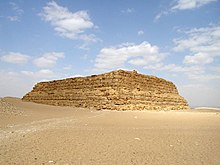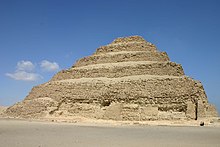Whats the purpose of these pyramids? Are they religious, political, or some kind technology? How wer they built as well?
And most importantly, how do you know based on your answers?
To answer your 1st and 2nd questions, as brief as possible, the answers are -
- “yes”, it has religious purpose,
- “yes” to it has political purpose,
- and “yes” to having a technological purpose.
The pyramids were built for kings, so of course, it is political, but probably not the way you think.
The pyramid is not the court or throne room or palace, it is not where the king issue their rules/laws or commands. It is not where they do day-to-day business.
It is, of course, a tomb, not the palace. It is political, in the sense, like the palace, as a visual symbol of their wealth and power.
Where as the palace is symbol of the king’s power in life, the pyramid is a symbol of the king’s power in death.
Technologically, the pyramid is basically a tomb, and that of the pyramid of Khufu - which we called the Great Pyramid of Giza - is the greatest engineering feat of the 3rd millennium BCE Bronze Age.
The Great Pyramid is the greatest in term in size, BUT not the earliest built. Khufu was the second ruler of the 4th dynasty (reign 2589 - 2566 BCE), but the oldest pyramid is the tomb of Djoser of the 3rd dynasty (reign c 2686 - 2667 or 2658 BCE).
Djoser’s tomb in Saqqara necropolis, is popularly known today as the Step Pyramid, was said to be designed and built by the famous architect, Imhotep.
Several other rulers had their own pyramids before Khufu, as did his father, Sneferu (reign 2613 - 2589 BCE), the founder of the 4th dynasty. These earlier pyramids showed improvements made since Djoser in Saqqara and before Khufu started constructing his own at Giza, demonstrating progress.
As to the religious aspect to the Old Kingdom dynasties (3rd, 4th, 5th & 6th), you would have to understand the myth as to why these pyramids were constructed.
Before the Osiris cult (including Isis and Horus, as the Holy Trinity) became predominant religion relating to the afterlife and resurrection from the Middle Kingdom to the Hellenistic Ptolemaic dynasty, the cult of Re (Ra) and Horus was especially associated with the pyramids of the Old Kingdom, and the Ra cult rose to prominent in I͗wnw (later Heliopolis, or known in Bible Genesis as On) with the reign of Djoser.
The only information about the myths of Re (or Ra) and Horus in the Old Kingdom period come from hieroglyphs on the walls of the pyramids of the 5th dynasty ruler (Unas) and 6th dynasty kings (Teti, Pepin I, and Pepin II), known collectively today as the Pyramid Texts.
The Pyramid Texts (PT) is sort of like Middle Kingdom Coffin Text (CT) and the New Kingdom (and Late Kingdom) Book Of The Dead (BotD), containing myths and spells to resurrect the dead, except the PT are only reserved for resurrection of kings.
In the PT, the pyramid is a symbol of the first mound that rose out of the primordial water, known as Nun, created by Ra, hence the first land was where I͗wnw (Heliopolis) was located, the city of the sun god (Re, Atum, Horus).
The pyramid wasn’t just a representation of the first mound, but also the ladder, which the sky god Horus climb to ascend to the heaven.
As each ruler was given a Horus name (such names exist since the Predynastic period, for rulers of the Upper Egypt and rulers of the Lower Egypt), because a king was supposedly the living incarnation of Horus, the falcon-headed god the sky.
So when the king died, and entombed in his pyramid, the pyramid served as the ladder or stairway for the king to ascend, and become a crewman of Re’s Solar Barque (a boat) that Re sailed across the sky.
The Solar Barque is like the sun itself, in which Re give sunlight to Egypt each new day.
At night, the boat go into the Netherworld, where Re and his companions fight off monsters and demons, including Apep (Apophis), whom Re beheaded each new night.
The deceased kings who managed to resurrect and join Re's crew, would assist in the nightly battle.
Sources:
Faulkner, R. O., The Ancient Egyptian Pyramid Texts, Oxford University Press, 1969
Budge, E. A. Wallis, Legends Of The Gods: The Egyptian Texts, Hieroglyphic Texts and Translations, Dover (rev. 1994)
- The Legend of the Creation (the actual title to the papyrus is the "Book of overthrowing Apep, the Enemy of Ra, the Enemy of Un-Nefer"). This contained the myth of creation of the primeval mound and the first humans. About Re’ boat and the war against Apep (Apophis) is omitted in this translation, but can be found in Budge’s book (see below)
Budge, E. A. Wallis, The Gods of the Egyptians, Volume 1, Dover (rev. 1969)
- Book of overthrowing Apep, the Enemy of Ra
There is another religious purpose for building the pyramid.
As you know, when the king died, his body mummified and kept in the sarcophagus in one of the chambers. In another chamber, should be a life-size image of the pharaoh, like a statue, or even figurine, (known as "
ka statue") where the soul, known as
ka, reside in, while the pharaoh's spirit, called
ankh, joined Re in his Solar Barque. The ka statue is kept in a separate chamber, called serdab.
As long as the ka statue remain intact, and undamaged, the king's spirit will live forever. Destroy the ka statue, you would destroy his ka (soul), therefore destroying the spirit (ankh).



